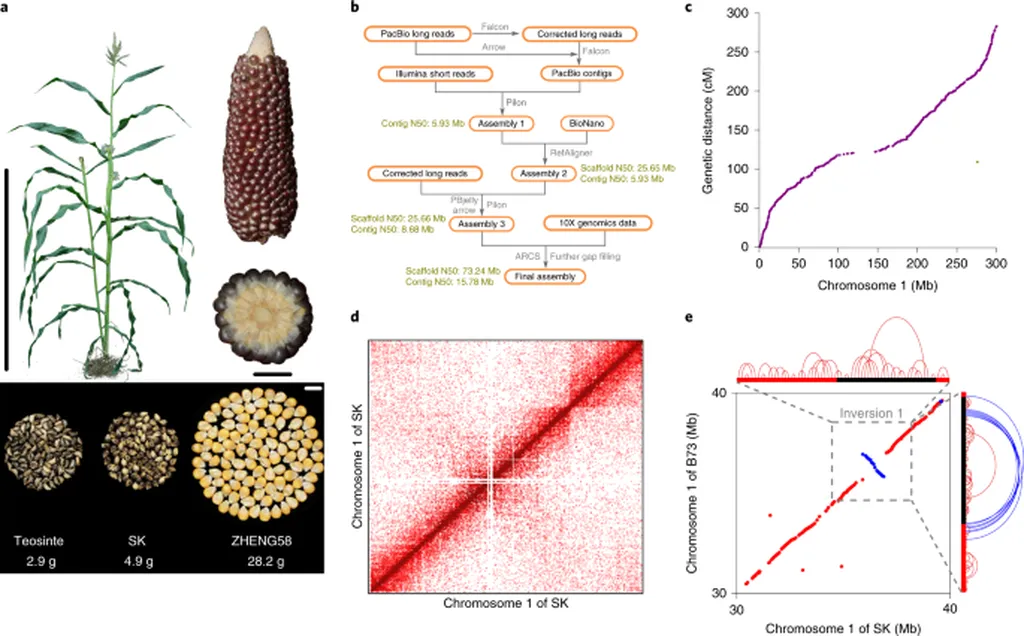In the quest to boost maize productivity, scientists have turned their attention to an often-overlooked part of the plant: the leaf midrib. A recent study published in *Frontiers in Plant Science* has uncovered the genetic secrets behind leaf midrib architecture (LMA), offering new avenues for improving crop yield and canopy structure. The research, led by Dongdong Dang from the Shenyang City Key Laboratory of Maize Genomic Selection Breeding at Shenyang Agricultural University, sheds light on the complex genetic architecture governing midrib traits in maize.
The leaf midrib, a central vein running through the leaf, plays a pivotal role in supporting leaf structure and facilitating photosynthesis. Despite its importance, the genetic basis of midrib traits has remained largely unexplored until now. Dang and his team conducted a genome-wide association study (GWAS) using a diverse panel of 508 maize inbred lines, representing tropical, subtropical, and temperate germplasm. They measured three key traits—midrib width (MW), total midrib thickness (TMT), and midrib basal thickness (MBT)—across two environments in Liaoning Province, China.
The study revealed that all LMA traits exhibited continuous variation and moderate heritability, with significant positive correlations among them. “This indicates that these traits are under strong genetic control and can be targeted for breeding programs,” Dang explained. The GWAS identified six significant single nucleotide polymorphisms (SNPs) associated with LMA on chromosomes 5, 7, and 8, corresponding to 97 genes in adjacent genomic intervals.
Among these genes, 27 were enriched in functions related to transcriptional regulation, hormone signaling, cytoskeleton organization, and cell development. Key candidate genes included GRMZM2G074124 (a YABBY-domain factor), GRMZM2G130953 and GRMZM2G332390 (auxin-related), GRMZM2G079185 (LOB-domain protein), and GRMZM2G407517 (Actin7). These genes play crucial roles in midrib formation and offer promising targets for genetic improvement.
The study also found significant associations between LMA traits and yield-related parameters, such as cob diameter and grain weight. This suggests that optimizing leaf midrib architecture could enhance canopy structure and productivity in maize. “Our findings provide novel insights and candidate loci for molecular dissection and genetic improvement of leaf midrib traits,” Dang noted.
The implications for the agriculture sector are substantial. By understanding and manipulating the genetic basis of LMA, breeders can develop maize varieties with improved canopy architecture, leading to better light interception, photosynthesis, and ultimately, higher yields. This research opens new doors for precision breeding and genetic engineering, paving the way for more resilient and productive maize crops.
As the global demand for food continues to rise, innovations in agritech are more critical than ever. This study not only advances our understanding of maize genetics but also offers practical tools for breeders and researchers to enhance crop performance. With further research and application, the insights gained from this study could revolutionize maize breeding and contribute significantly to global food security.

